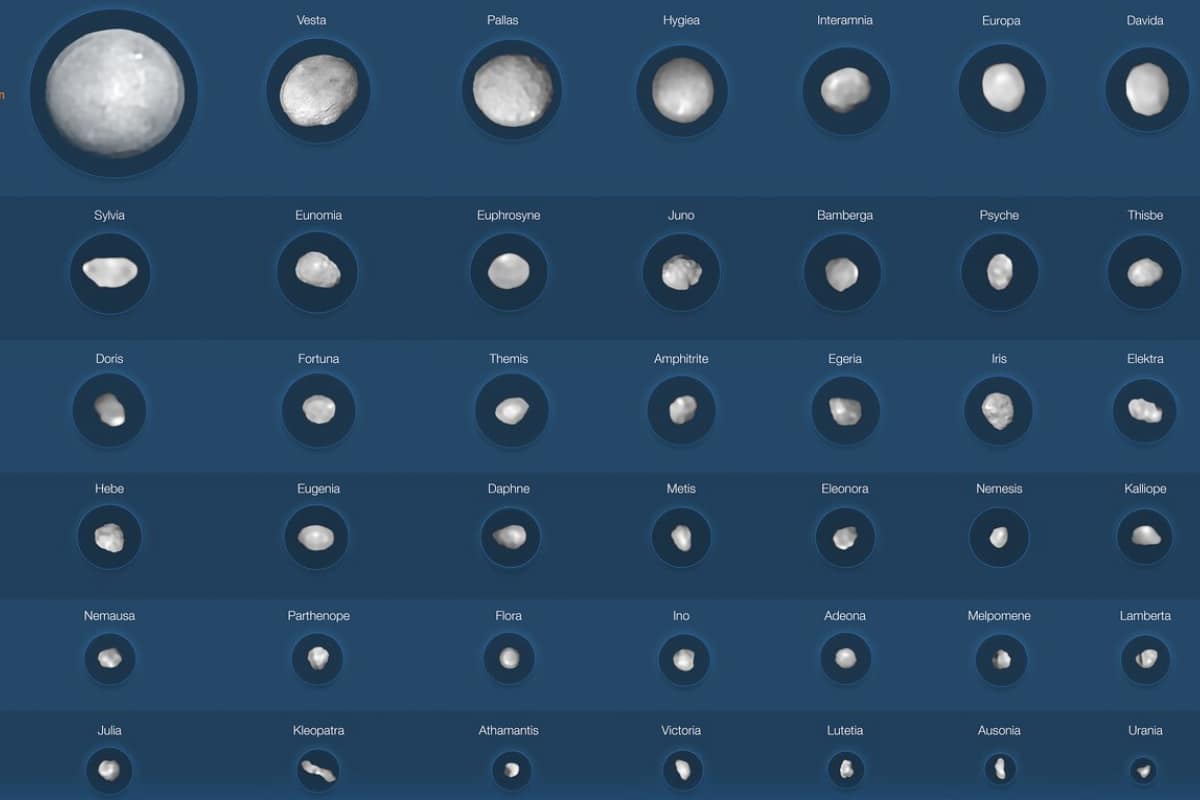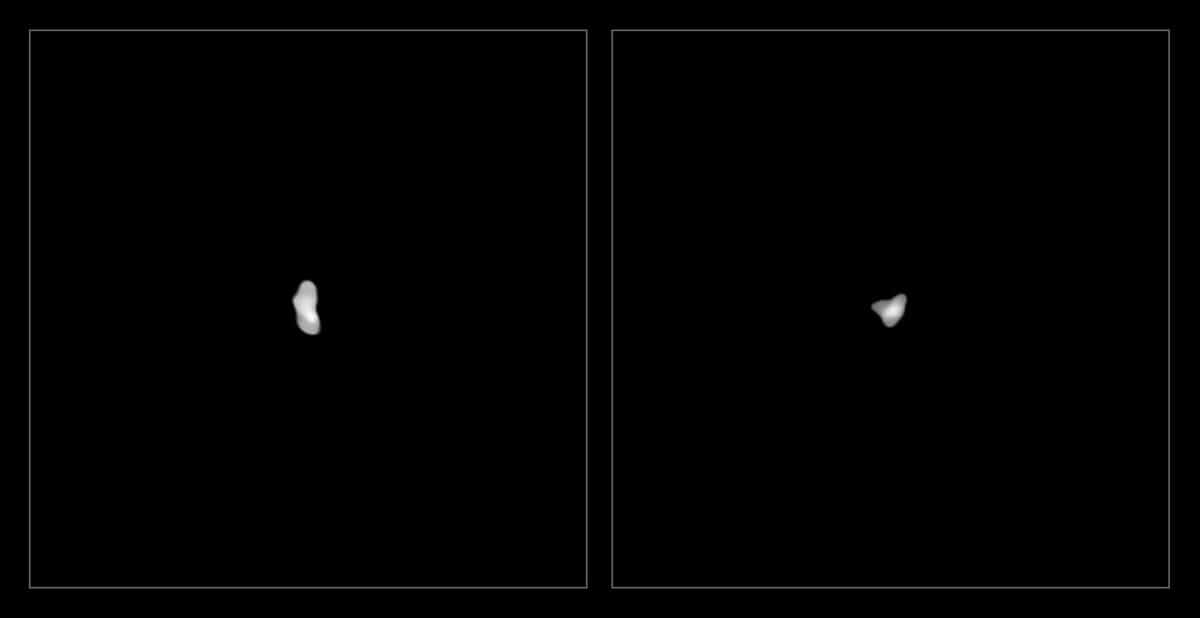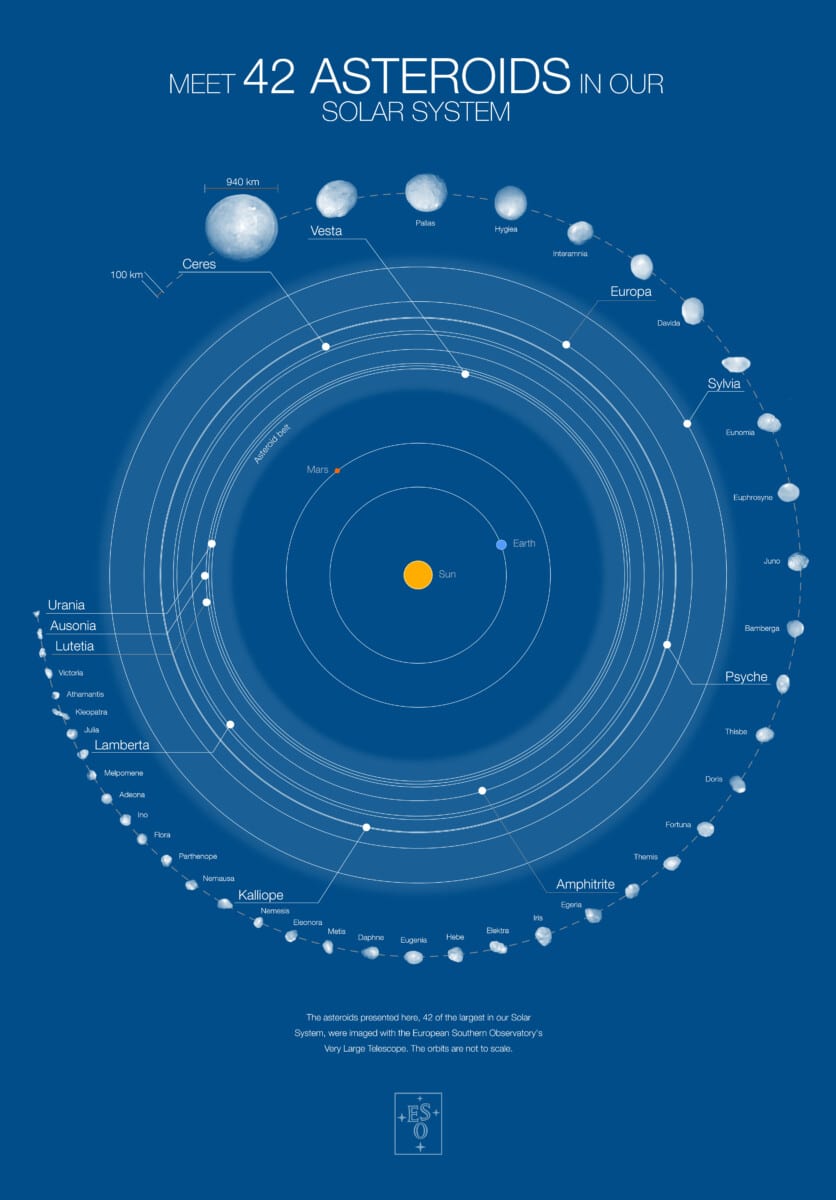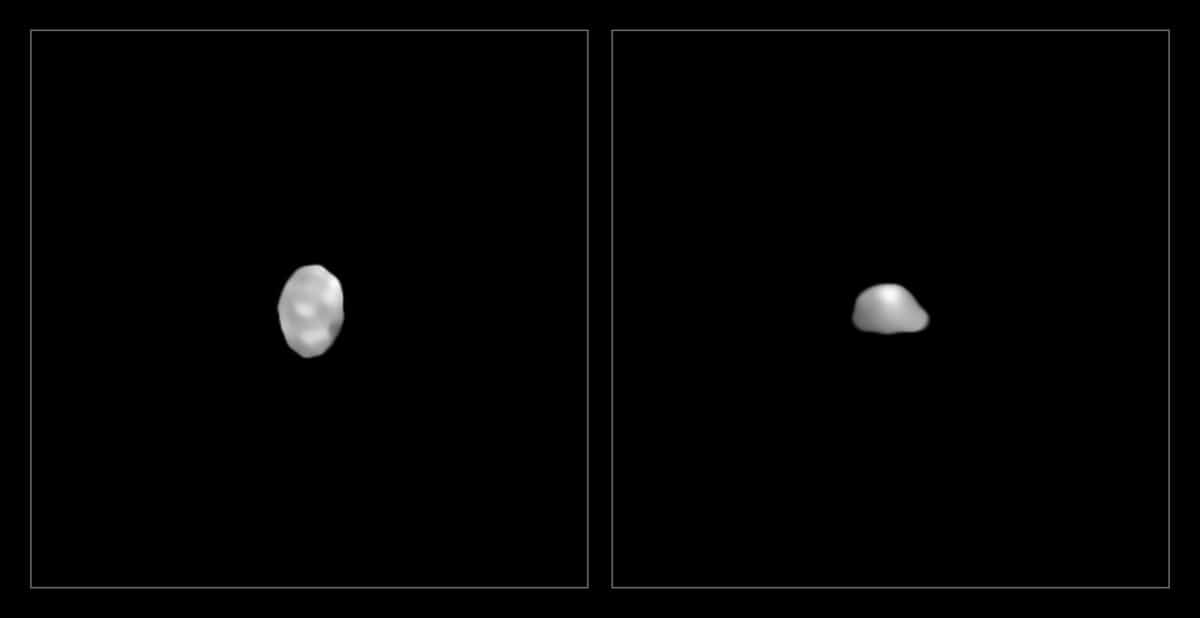
Until recently, clear images of only three major asteroids in the main belt were available, but astronomers are now adding 39(!).
It means that we now have a good idea of the (three-dimensional) shape and density of 42 objects in the asteroid belt between Mars and Jupiter. And that in turn helps astronomers determine how and where the asteroids in our solar system actually formed.
SPHERE
To create detailed images of dozens of objects in the main belt, the researchers used ESOs Very Large Telescope. And especially the Spectro-Polarimetric High-contrast Exoplanet REsearchinstrument associated with it. “Until now, only three major asteroids in the main belt — Ceres, Vesta and Lutetia — have been imaged in detail, as they have been visited by NASA and ESA’s Dawn and Rosetta space missions, respectively,” said researcher Pierre Vernazza. “Our ESO observations have yielded sharp images of a much larger number: 42 in total.” Never before has such a large group of asteroids been captured so sharply.
From shadowy spot to clear image
The images give us a unique insight into the main belt, which is inhabited by millions of space rocks, the largest of which were often only a shadowy speck in even the best images we had until recently. For example, Vernazza and his team focused on almost all asteroids that reside in the main belt and are larger than 200 kilometers. But they also managed to capture clear images of significantly smaller space rocks, such as Urania and Ausonia, each only about 90 kilometers in size.

Ausonia and Urania. Image: ESO/Vernazza et al./MISTRAL algorithm (ONERA/CNRS).
Variety
The images reveal that the asteroid belt contains a wide variety of objects that can be roughly divided into two categories in shape. You have the asteroids that are almost perfectly spherical (like Ceres and Hygiea for example). And there are asteroids that have an elongated shape. An extreme example of this is Kleopatra; an asteroid that is sometimes compared to a dog bone because of its exceptional shape.

Image: ESO/Vernazza et al./MISTRAL algorithm (ONERA/CNRS).
Density
By revealing the three-dimensional shape of the asteroids, the images allowed the astronomers to combine them with the masses of the asteroids. And from this the density can be derived. And that also appears to differ greatly from asteroid to asteroid. For example, the four least dense asteroids – including Lamberta and Sylvia – have a density of about 1.3 grams per cubic centimeter (similar to the density of coal). While Psyche and Kalliope – the asteroids with the highest densities – have a density of 3.9 and 4.4 grams per cubic centimeter (their density is greater than that of diamond).

Calliope and Psyche. Image: ESO/Vernazza et al./MISTRAL algorithm (ONERA/CNRS).
Origin
What these large differences reveal is that the composition of the asteroids and therefore their place of origin differ. “Our observations support the idea that these objects have undergone substantial migration since their formation,” said researcher Josef Hanuš. “In short, the enormous variation in their composition can only be understood if the objects originated in different parts of the solar system.” For example, the results seem to support the theory that the lowest-density asteroids formed beyond Neptune’s orbit and later moved to their present location.
Researchers expect to learn much more about the inhabitants of the asteroid belt in the future – again using Earth-based telescopes. And in doing so, the focus will be thanks to the Extremely Large Telescope, also no longer lie on the largest objects, Vernazza predicts. “ELT observations of asteroids in the main belt will allow us to examine objects with diameters up to 35 to 80 kilometers, depending on their location in the belt, and craters up to about 10 to 25 kilometers in size. With a SPHERE-like instrument on the ELT, we could even take a similar sample of objects in the distant Kuiper belt. This means we can map the geological history of a much larger sample of small objects from the ground.”
Source material:
“Meet the 42: ESO photographs some of the largest asteroids in our solar system” – ESO
Image at the top of this article: ESO / M. Kornmesser / Vernazza et al. / MISTRAL algorithm (ONERA / CNRS)